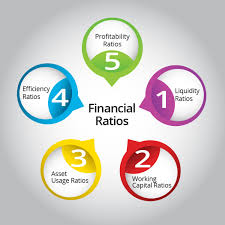Financial Ratios indicate about the financial position of organisation.A company is deemed to be financially sound if it is in a position to carry on its business smoothly and meets its obligations,both short term as well as long term with out strain.It is a sound principle to finance that the short term requirement of funds should be met out of long term funds.v.z if the payment of raw materials purchases are made through issue of debenture it will create a permanent interest burden on the enterprise.Similarly,if fixed assets are purchased out of funds provided by banks overdraft,the firm will come to grief because such assets cannot be sold away when payment will be demanded by the bank.
Financial ratio can be divided into two broad categories.
- Liquidity Ratios
- Stability Ratios
Liquidity ratios :- It is the measure the firms ability to meet its current obligations that is ability to pay its obligations as and when they become due.Low Liquidity may result in the failure of meeting firms short term liabilities which may carry bad name in the market.,loss of creditors confidence.A very high liquidity is also bad because the funds are unnecessary tied up in current assets.
Followings are important Liquidity ratios.
1.Current Ratio:-The current ratio is the ratio of total current assets to the total current liabilities.It is also called as working capital ratio.It is an index of concerns financial stability
2.Acid Test/Quick Ratio:-It is the ratio of quick assets to current liabilities .It is the measures the abi lity of the enterprise to pay off its current obligation immediately
Stability Ratio:-These ratio help in ascertaining the long term solvency of the firm.
1.Fixed asset ratio:- This ratio indicates how much the assets of an enterprise cover the amount of secured long term loan.
2.Capital Gearing Ratio:-This ratio determines the relationship between the debts of the company and shareholders funds.If the company has much more debts than own equity it is said to be highly geared position which may yield some benefits to the shareholder.
3.Debt to equity ratio:-it relates all recorded creditors claims on the assets to the owners recorded claims in order to measure the firms obligation to creditors in relation to funds provided by owners.
4.Proprietary ratio:- It is relationship between the proprietors funds and total tangible assets.
Click here for government certification in Accounting, Banking & Finance





8 Comments. Leave new
Good effort..
Good job
I the like the blog
Nice.
Very Informative!
Informative write up
Informative article. Good job!
Explained well.. also well confined..!